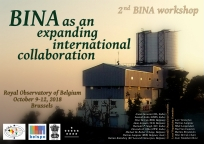Speaker
Ms
Shejeelammal J
(Student)
Description
The origin and evolution of neutron-capture elements in our Galaxy is poorly understood. Detailed chemical composition analysis of stars with the atmosphere enriched by these elements can throw light on the Galactic chemical evolution history. Metal-deficient Ba stars form useful candidates for this kind of studies. They are mostly in their main-sequence and giant phase of stellar evolution with enhanced abundance of neutron-capture elements in their surface. Nucleosynthesis theories do not support the occurrence of s-process nucleosynthesis during the stellar evolutionary phases to which these stars belong. Low and intermediate mass stars in their Asymptotic Giant Branch (AGB) phase are known to produce the s-process elements. Most of the barium stars are known to be binary systems and they are believed to have received via binary mass transfer mechanisms the products of the companion stars produced during their AGB phase of evolution. Hence, the chemical composition of this class of objects can be used to trace back the AGB nucleosynthesis at their corresponding metallicities. The [hs/ls] ratio (hs/ls refer to the heavy/light s-process elements, respectively) could give clues to the accurate origin of the s-process nucleosynthesis, the reactions operating at different metallicities. The C/O ratio and 12C/13C ratio can provide insight into the evolutionary status of the star and different nucleosynthesis and mixing processes happening in the stellar interiors, while the [Rb/Sr] ratio provides the mass of AGB star. We will present the results of detailed spectroscopic study of a selected sample of Ba stars performed along this line based on the high-resolution optical spectroscopic observations using 2-m HCT/HESP, 8.2-m VLT/UVES and ESO-MPI/FEROS. Possibilities of taking forward such studies in the framework of BINA collaboration will be discussed.
Primary author
Ms
Shejeelammal J
(Student)
Co-author
Dr
Aruna Goswami
(Associate professor)

